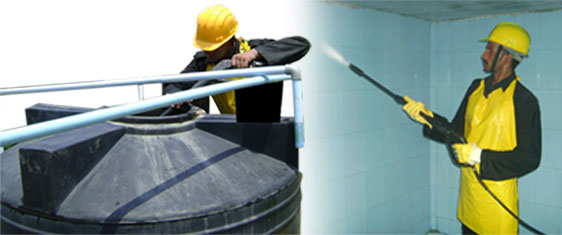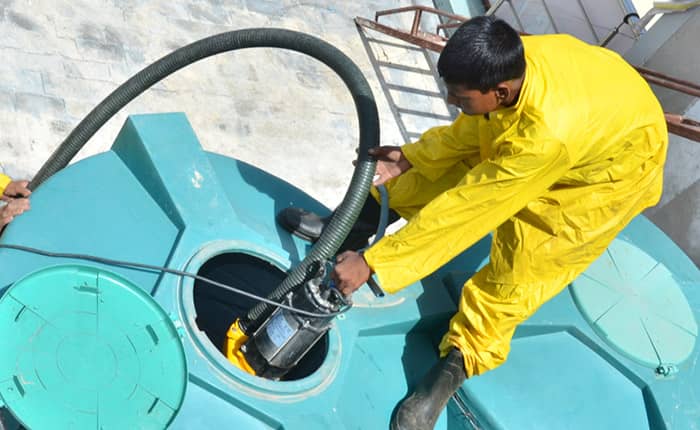Water intended for human consumption is a vital food whose quality must be controlled during its transport. However, water storage and distribution structures (reservoirs, pipelines) can be the site of deposition phenomena resulting from the sedimentation of particles or physicochemical reactions (formation of metal oxides, scaling, etc.) and growth of microorganisms (formation of biofilms). These phenomena are influenced by parameters such as the residence time, or the interventions performed on the installations.
It is, therefore, necessary to incorporate hygiene rules into the design, construction, and operation of water installations intended for human consumption.
Importance and objectives of the maintenance of water installations intended for human consumption
When working on the drinking water distribution water tank refurbishment networks and related equipment, it is essential to ensure the quality of the interventions to avoid any contamination of the water subsequently distributed to the tap. of the consumer. The main purpose of the disinfection of a drinking water distribution system or network element is therefore to eliminate the causes of alteration of the microbiological quality of the water between its point of collection, or treatment, and its point of consumption. This final operation is not enough in itself, it must be preceded by a cleaning and rinsing operation. This will play a key role in the success of the final disinfection:

Need for disinfection
- It is not possible to build or repair a water tank, install or repair water pipes in perfect aseptic conditions.
- Mechanical or chemical cleaning and flushing with water are essential but insufficient because microbial nests can persist and then contaminate the distributed water.
- The purpose of cleaning the water tank tanks is to remove deposits of iron and manganese oxides and to remove any sludge deposited therein (clays, hydroxides or metal oxides, etc.).
- The operation of cleaning and disinfecting the water installations must, therefore, make it possible, as soon as they come back into service, to obtain a quality that complies with the regulatory requirements and in particular to eliminate the pathogenic germs that may be present in the network section. where the intervention took place.
Main objectives
- A complete cleaning and disinfection procedure must serve several purposes, including:
- Eliminate foreign matter present in the installations (pipes, tanks);
- Eliminate sources of microbial contamination present in the facilities (pipes, tanks, and connected equipment);
- Avoid contaminating the existing distribution network;
- Avoid complaints caused by the installation and / or maintenance of pipes and tanks (turbid, colored water …)
- Regulatory provisions relating to the hygiene rules applicable to water installations intended for human consumption
Scope and frequency of maintenance of facilities
If a product is composed of substances listed in the order, the product can be placed on the market without any particular approach. By the Consumer Code, the person responsible for placing the product on the market must have evidence of the sanitary compliance of his product and he must keep it at the disposal of the administration concerned.
